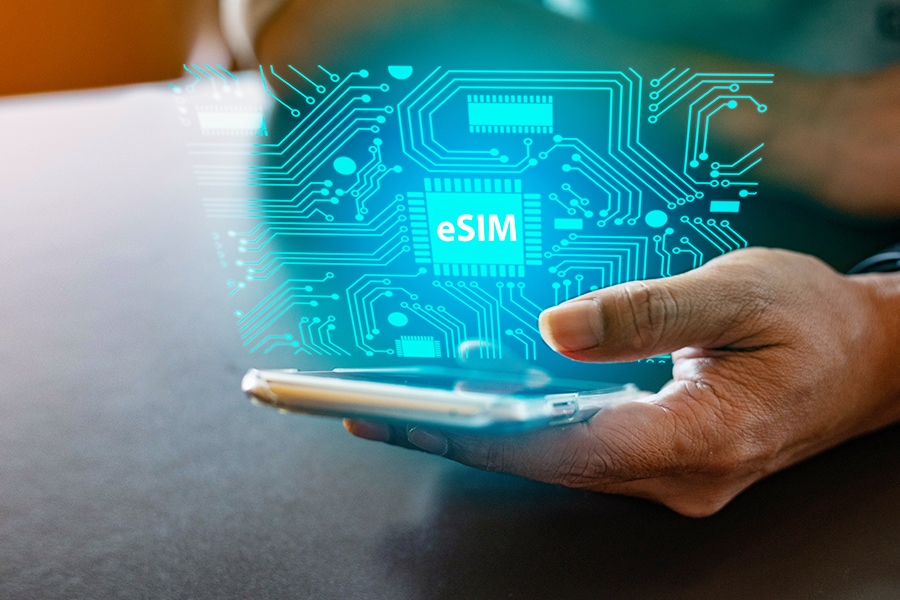
After 5G, here comes the e-SIM
Besides offering the obvious feature of staying connected through a smart device without carrying a mobile phone, customers will find shifting to a new mobile number easier and faster through an e-SIM
 E-SIMs are new to India, but in the Western markets of the USA and UK, they have been around for 5-6 years or more.
Image: Shutterstock
E-SIMs are new to India, but in the Western markets of the USA and UK, they have been around for 5-6 years or more.
Image: Shutterstock
The scramble for subscribers to move to 5G is on, in order to get a deeper, faster and more reliable (low latency) experience for users for their calls, data usage and connectivity. And even while subscribers are slowly starting to shift to a 5G network from 4G, the new buzzword is e-SIMs. All the three major telecom service providers—Reliance Jio, Bharti Airtel and Vodafone Idea—have, in recent weeks, launched their own e-SIMs.
What are e-SIMs?
E-SIMs are embedded SIMs already present on the motherboard of a cell phone device. It obviously means that your mobile phone needs to be SIM embedded. Some smart watches and newer models of smartphones are e-SIM enabled. For most others, the smart phone uses a physical SIM, in the form of a memory chips with a processor and a transmitter in it which would connect to the telecom tower to catch a signal.Is this a new function in India?
E-SIMs are new to India for Android phone users, but not Apple users. In the Western markets of the USA and UK, they have been around for 5-6 years or more. Apple had tied up with Reliance Jio and Airtel for connectivity for their iPhones through eSIMs in 2019. The e-SIM first became popular with the Apple Watch Series 3 in 2017, which had an e-SIM feature to connect to other Apple devices.Also read: Comviva 2.0: Reboot & Conquer





